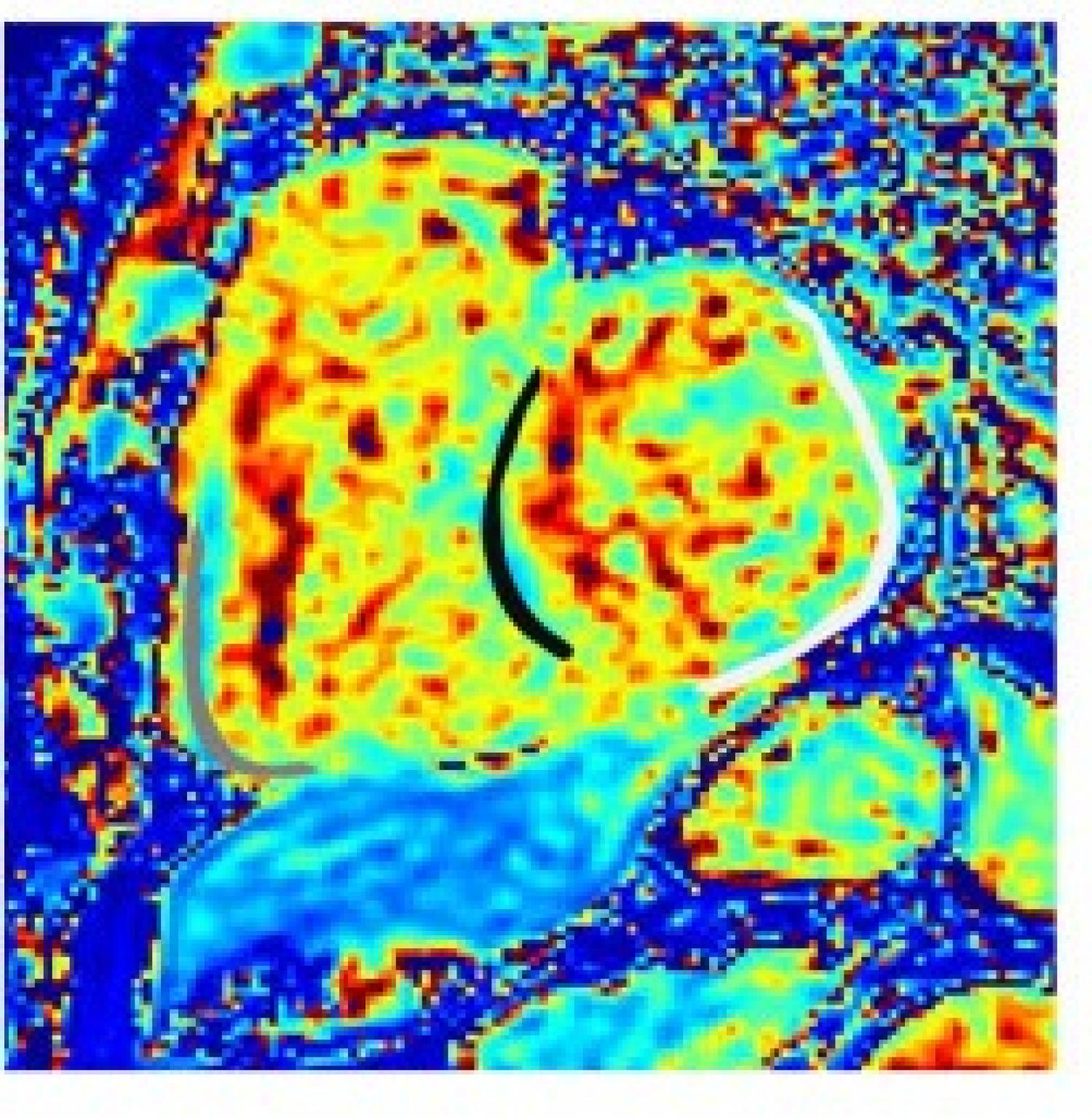
Background
To investigate the relationship between the extracellular volume fraction (ECV) measured using cardiac magnetic resonance (CMR) T1 mapping and cardiac events in symptomatic adults with tetralogy of Fallot (TOF).
Methods
A total of 60 consecutive symptomatic adults (35.4 ± 13.8 years old) with repaired TOF who were in New York Heart Association functional class 2–4 were prospectively enrolled. Native T1 values and ECV of the free walls of the right ventricle (RV), the left ventricle, and the ventricular septum were obtained by CMR T1 mapping using a 3.0 T scanner and the saturation recovery method. Correlations between T1 mapping measurements, conventional parameters, and predictors of adverse cardiac events were analyzed. The patients with episodes of only atrial arrhythmia were excluded.
Results
Significant correlations were observed between RV functional parameters, RV-ECV, and septum-ECV. Follow-up period was 747.1 ± 315 days and 13 patients had cardiac events: Acute heart failure and/or sustained ventricular tachycardia occurred in 8 patients and 5 patients underwent cardiac surgery. Cox-hazard analysis revealed that septum-ECV and RV-ECV were predictors of adverse events (hazard ratio of septum-ECV and RV-ECV: 1.41 and 1.19, 95% CI: 1.05–1.89, 1.004–1.41 with p-values of 0.02, and 0.045, respectively). Adults with septum-ECV >29.0% and RV ejection fraction (EF) <45.0% were more likely to experience cardiac events (log rank test: p < 0.043).
Conclusions
RV-ECV and septum-ECV correlate with RV functional parameters. Biventricular ECVs can be predictors of adverse cardiac events in adults with TOF. In particular, the combination of septum-ECV and RVEF was a useful predictor, compared to the use of a single CMR parameter.
